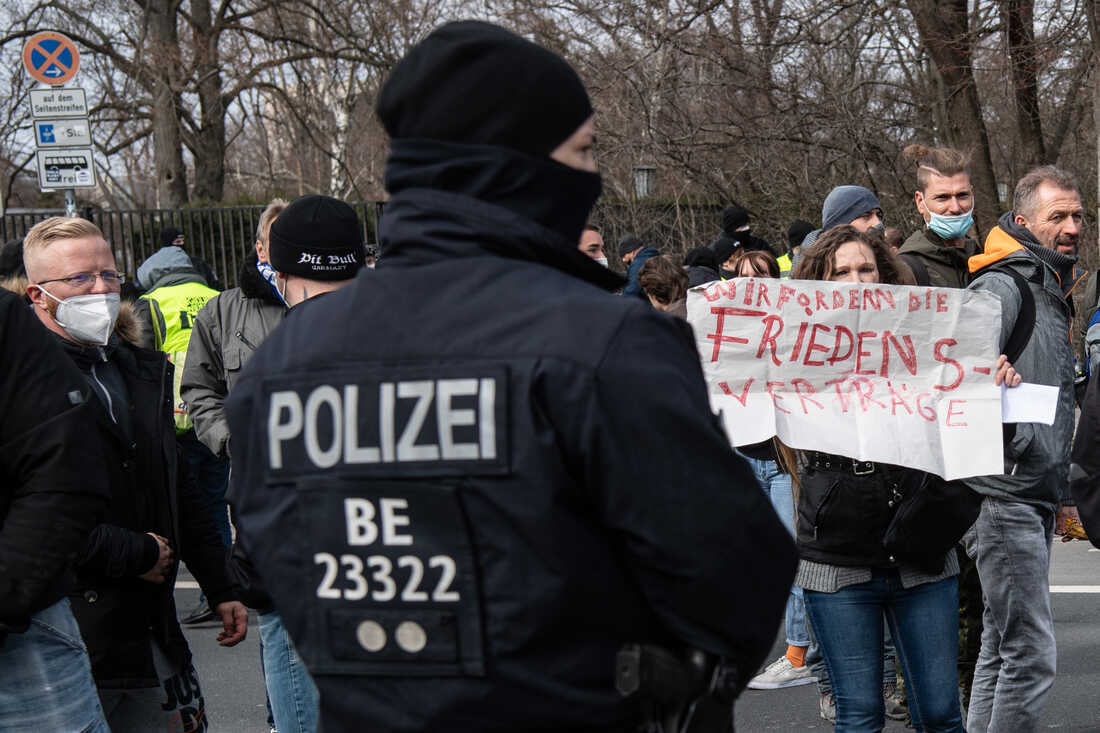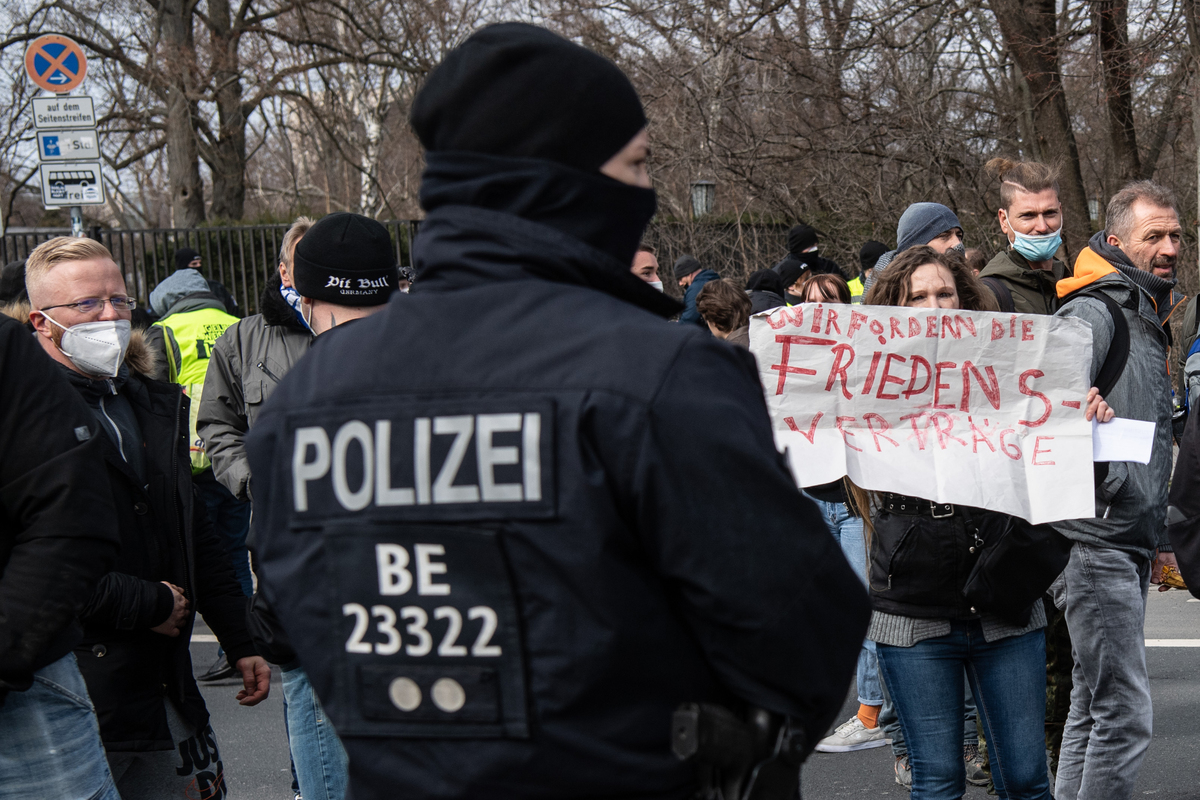
A police officer observes participants in the demonstration of right-wing extremists and Reichsburger on March 20, 2021 in Berlin. German right-wing extremists and "Reich citizens" are growing in number and present a "high level of danger," according to German officials. Paul Zinken/Picture Alliance via Getty Images hide caption

A police officer observes participants in the demonstration of right-wing extremists and Reichsburger on March 20, 2021 in Berlin. German right-wing extremists and "Reich citizens" are growing in number and present a "high level of danger," according to German officials.
Paul Zinken/Picture Alliance via Getty ImagesThis week, authorities in Germany arrested more than two dozen suspected far-right extremists over a plot to violently overthrow the government.
The plotters were reportedly inspired by QAnon conspiracy theories.
NPR's Rob Schmitz walks us through the latest.
And German historian and author Katja Hoyer explains why members of Germany's far-right can seem invisible.
Email us at
This episode was produced by Karen Zamora, Erika Ryan and Amra Pasic. It was edited by William Troop, Nishant Dahiya, Esme Nicholson and Ashley Brown. Our executive producer is Sami Yenigun.

 Live Radio
Live Radio